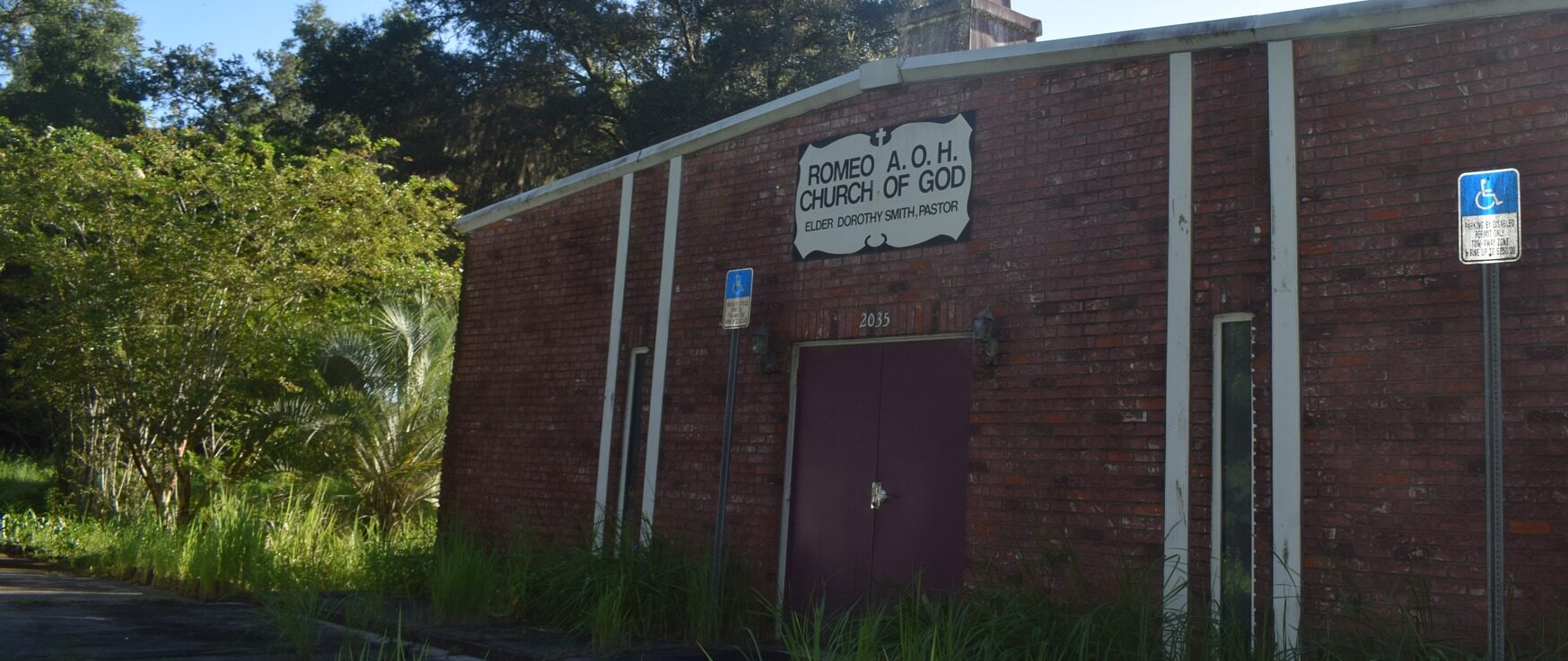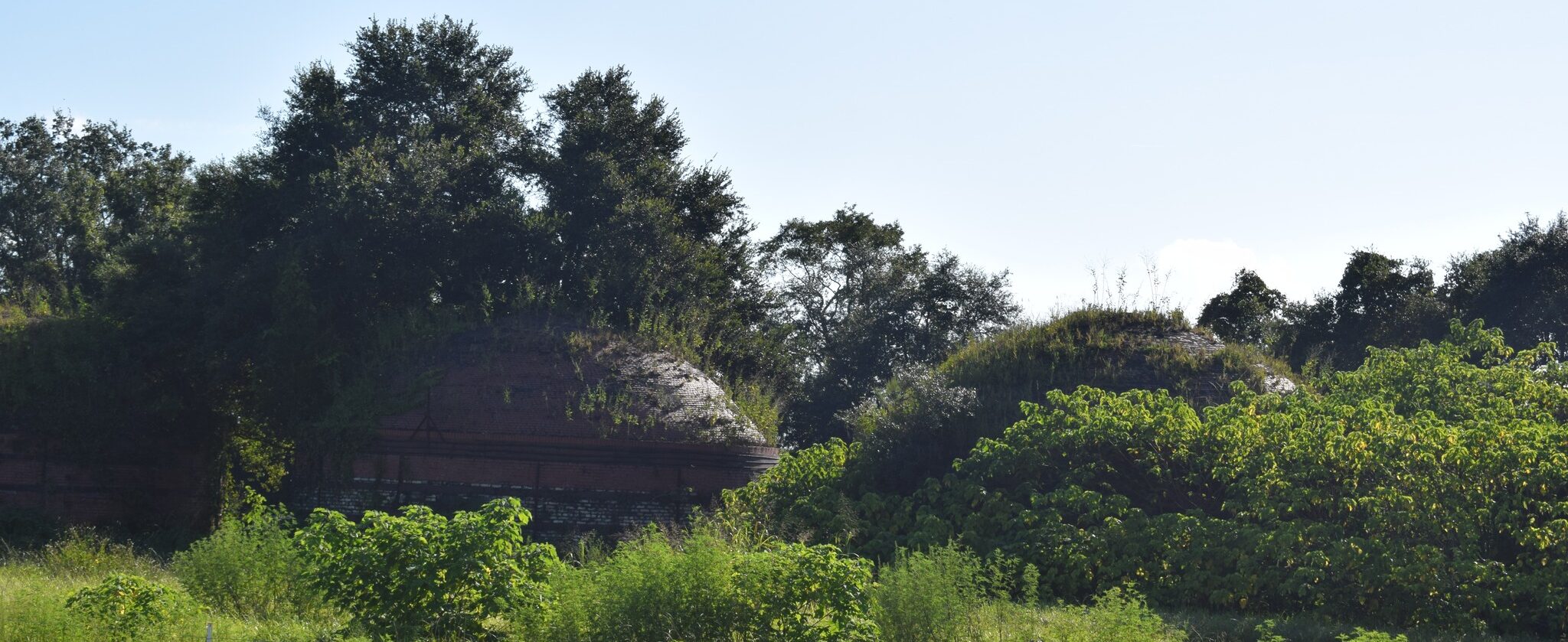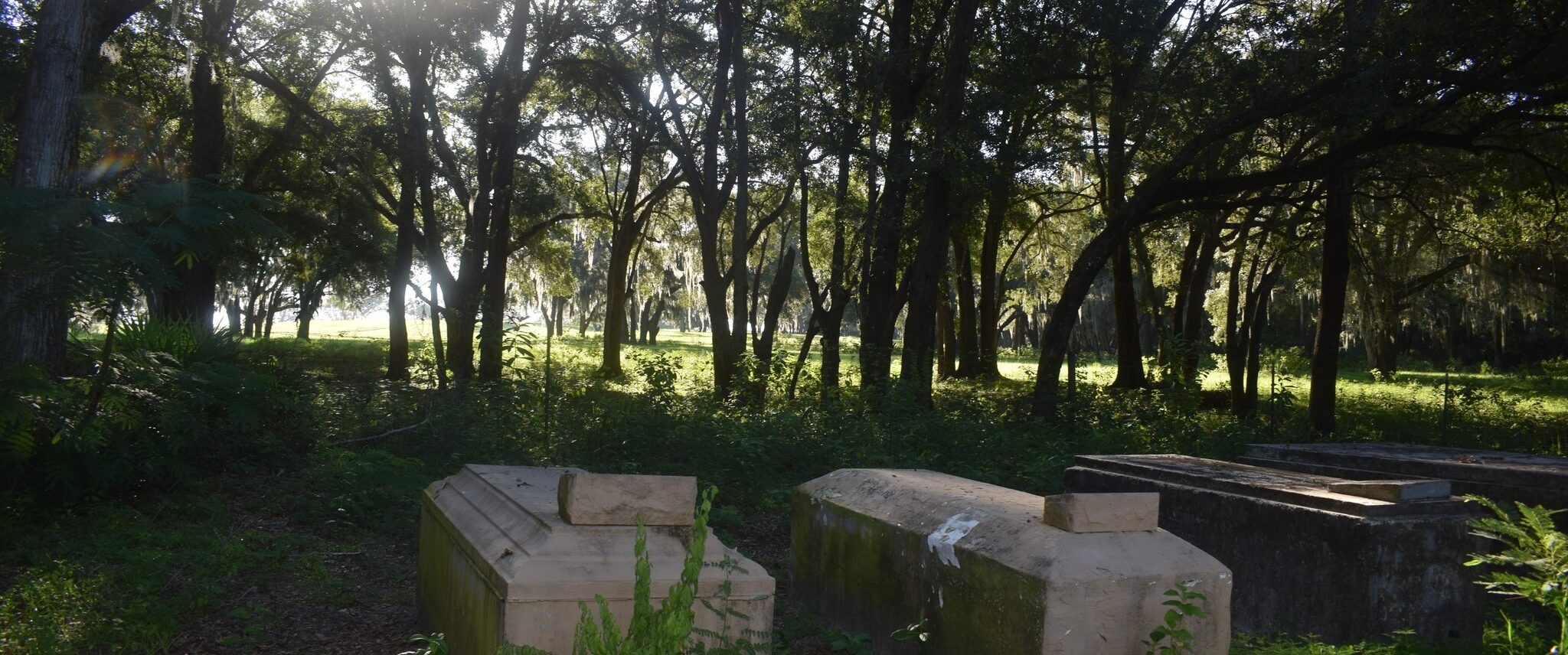In Marion County, amidst whispering oaks, lies Romeo: a place whose name once promised love, now haunted by silence.

Located in Marion County, Romeo, Florida, is a near-forgotten ghost town with a rich yet mysterious past. The story of Romeo began around the 1850s, when it was a thriving little community full of promise and life. The town attracted settlers with its fertile land and opportunities, laying the foundation for what seemed to be a bright future after tracts were divided in 1880. The post office was established on January 17, 1886, and lasted until 1955, with the exception of a short, one-year hiatus.
The early settlement era saw Romeo bustling with activity. Families moved in, businesses sprouted, and the town buzzed with its residents’ dreams. By the late 1800s, Romeo had grown into a well-established community. The charm of small-town life was palpable, with everyone knowing each other’s names and lending a helping hand whenever needed.
But like many towns of its time, Romeo had its share of troubles. Economic downturns, changes in trade routes, and other unforeseen challenges started to chip away at the town’s prosperity. The establishment of the Marion County Prison nearby also cast a long shadow over Romeo’s future, creating tensions and fears among the locals.
As time passed, these issues snowballed, leading to a gradual decline. Businesses began to close, families moved away in search of better opportunities, and over time, the vibrant community of Romeo started to fade into history. By the mid-1900s, Romeo had transformed from a bustling town to a ghost town—a relic of the past now cloaked in mystery and forgotten stories.
To see a detailed tour of my visit to Romeo, watch the video below:
Living in Romeo, Florida: An Insight into its Population in the Late 1800s
Life in Romeo during the late 1800s was a slice of Americana, reflecting a simpler time before modern conveniences. With a population that barely hit a few hundred, everyone pretty much knew each other. This close-knit community’s vibe was one of mutual support and camaraderie.
The town was populated mainly by individuals and families seeking new beginnings in the fertile lands of Florida. Farming was the primary occupation, with crops like corn, cotton, and tobacco filling the fields. The simplicity of rural life was evident, with daily routines centered around crop cultivation and tending to livestock.
Notable figures sometimes emerged within the community, whether due to their contributions to local agriculture or their roles in small businesses. Local merchants, blacksmiths, and carpenters played significant roles in keeping the town’s economy afloat. These jobs were more than just a means of making a living; they were the heartbeat of the town.
Social life revolved around community gatherings, church meetings, and town events. With no digital distractions, neighbors spent evenings sharing stories by lantern light or attending social functions. These activities not only provided entertainment but also strengthened the community bond.
Despite economic challenges, the residents of Romeo showed a remarkable ability to adapt and support each other. Hardships were common, but so were generous acts of kindness. Whether lending a hand during harvest or sharing resources during tough times, the spirit of cooperation was evident in every corner of the town.
The Marion County Prison: A Notorious Institution in Romeo

Romeo’s story took a darker turn with the establishment of the Marion County Prison. Constructed in the early 1900s, this facility was meant to house those who had fallen on the wrong side of the law. Its presence in the vicinity of Romeo had a profound impact on the town and its residents.
The prison was built as a maximum-security facility. Its imposing structure and high walls starkly contrasted Romeo’s quaint, rural landscape. The operations inside were shrouded in secrecy, but stories of harsh conditions and strict discipline filtered out, adding to its notorious reputation.
Life inside the prison was notoriously tough. Inmates faced grueling labor, limited communication with the outside world, and strict rules enforced by stern wardens. The environment was designed to be harsh, deterring crime through the fear of ending up in such a place. The prison was a place of mystery and sometimes fear for the townsfolk, symbolizing law and order imposed through rigid control.
The prison’s impact on the Romeo community was significant. On the one hand, it provided jobs for guards and maintenance staff. On the other, it changed the town’s character, introducing an element of caution in everyday life. Parents warned their children to stay away from the prison grounds, and rumors swirled about daring escape attempts.
While the prison no longer stands today, the stories and memories of its presence linger. Visiting the site of the old Marion County Prison offers a stark reminder of the past and the dual nature of its influence on the once-thriving community of Romeo.
Locating the Romeo Ghost Town: A Guide for Modern Explorers

Finding the Romeo ghost town today is like hunting for hidden treasure as it sits hidden off Highway 41, about 4 miles North of Dunnellon. Romeo lies off the beaten path, enveloped by the Florida wilderness, in Marion County, Florida. You’ll need a reliable map and a sense of adventure to get there. The coordinates aren’t hard to find, but you won’t stumble across it accidentally. I programmed 1805 Northwest 190th Avenue, Dunnellon, Florida 34432, into my GPS, which got me into the general area.
Once you reach the area, the telltale signs of a ghost town emerge—abandoned vehicles, overgrown paths, and remnants of structures that speak to a bygone era. The town’s layout, despite its decay, can still paint a picture of what life was like over a century ago.
Visiting the site today offers a unique opportunity to step back in time. Wear sturdy shoes, bring water, and be prepared for a trek through nature. The area is relatively remote, so going with friends or informing someone about your plans is advisable before setting out. But beware, you’re likely to feel eyes on you – maybe it’s the wind, maybe it’s the past.
Several points of interest make the visit worthwhile. The old cemetery holds the graves of some of Romeo’s earliest settlers, their weathered tombstones telling silent stories of the past. An old Romeo Church is also nearby, giving a sense of community where townspeople gathered for worship. The remains of the old charcoal enterprise are still on Highway 41 on the east side of the railroad tracks. While the plant dates from the 1960s, the furnaces seem much older.
For history buffs and adventure seekers alike, exploring Romeo is a step into Florida’s hidden past. The relics of this ghost town provide a tangible link to the lives and stories that shaped this once-vibrant community. Every corner turned, and the structure found adds to Romeo’s history’s puzzle.
My Visit to the Ghost Town of Romeo

Venturing into Romeo is an experience, and my visit was nothing short of fascinating. Armed with a map, a camera, and a sense of curiosity, I set out to find the remnants of this forgotten town. The journey was quiet, with only the sounds of nature accompanying me, adding to the eerie yet captivating atmosphere.
The first thing that caught my attention was the old cemetery. Walking among the gravestones, some nearly illegible with age, was a humbling experience. Each name and date carved into the stone represented a life lived in a time long past. The cemetery was overgrown, with weeds among the tombstones, yet it remained a poignant testament to Romeo’s history.
Further exploring, I stumbled upon the remains of the old church. The large trees and overgrown weeds surrounding it made walking around the church grounds a little eerie. Looking into the window, I could still see curtains hanging as if the church folk had just up and left one day, never to return.
Perhaps the most evocative moment of my visit was finding several old, rusted vehicles abandoned among the trees. They stood as stark reminders of when Romeo was alive with activity. The trucks, now reclaimed by nature, seemed almost like a time capsule, holding onto the memories of its era.
By the end of my visit, I felt a deep connection to the history and stories that makeup Romeo. Exploring this ghost town reminded me of the impermanence of settlements and the resilient spirit of those who once lived here. Each step I took was a walk through history, offering glimpses into lives long past and a town that once was.
Romeo wasn’t built to last, but neither was any love – but like any story worth telling, its whispers outlive its walls.
To see all of the pictures I took while exploring Romeo, click here.
If you see this after your page is loaded completely, leafletJS files are missing.

It is not often that one comes across an article depicting a part of history, particularly about a town that is no longer in existence! Your story makes fascinating reading and the description you give about your visit to this ghost town is vivid to the imagination. I, and I am sure many people are not aware of the existence of such a place called Romeo but thanks to your findings, you have brought the ghost town to “life”. Your article also gives a glimpse of what it is like to have an exploring and inquiring sense of adventure. Thank you for sharing this fascinating experience.
Hi, Tandi! Thanks for the feedback, I truly appreciate it. I do enjoy exploring various parts of our history all over the country and I’m happy to share those experiences for those that can’t or won’t explore them. If you loved Romeo, be sure to check out Juliette!
This was a fascinating read about Romeo, Florida! I had no idea there was such a rich history behind this ghost town. It’s intriguing to think about how places like Romeo once thrived and are now nearly forgotten.
I’m curious—are there any remaining structures or landmarks in Romeo that visitors can still see, or is it mostly overgrown now? Also, do you think there’s a chance for ghost town tourism to grow in this area, similar to other ghost towns in the U.S.?
I’ve visited a few ghost towns out West, and it’s always such a unique experience. This article has definitely piqued my interest in exploring more of these hidden historical gems in Florida. Thanks for sharing!
Hey there, thanks for the feedback! Romeo does have an abandoned church still standing, along with a nearby cemetery. I also found some abandoned vehicles but I wasn’t able to verify if they were abandoned before or after Romeo was. Romeo is pretty overgrown at this point, but not so much that you’re not able to explore it. I do think there is some opportunity for ghost tourism in this area, there are a lot of abandoned ghost towns and cemeteries in the Withlacoochee Forest area that I am planning to explore. I hope you do get out and explore some old Florida history, would love for you to share your explorations with us!
Wow, your exploration into the ghost town of Romeo, Florida was absolutely captivating! The mix of historical insights and eerie descriptions really painted a vivid picture. I’m curious, did you feel any particular vibe or presence while wandering through those abandoned places? Also, were there any local legends or spooky stories you heard about Romeo that you didn’t include in the article? It would be fascinating to hear more about the lore surrounding this ghostly locale. Thanks for sharing such valuable content!
Gabriel John
Hi Gabriel, thanks for the feedback! I was a little nervous in Romeo because there were a few residents that lived nearby who were watching me part of the time. But aside from that, I didn’t feel any eerie vibes while I was exploring Romeo. I haven’t found any spooky stories about Romeo either, which is surprising since the Marion County prison was located there at one point. However, there is a local legend about Romeo & Juliette being based on two star crossed lovers who’s tale ended tragically on account of their parents being enemies. You can check that out at Juliette Ghost Town.